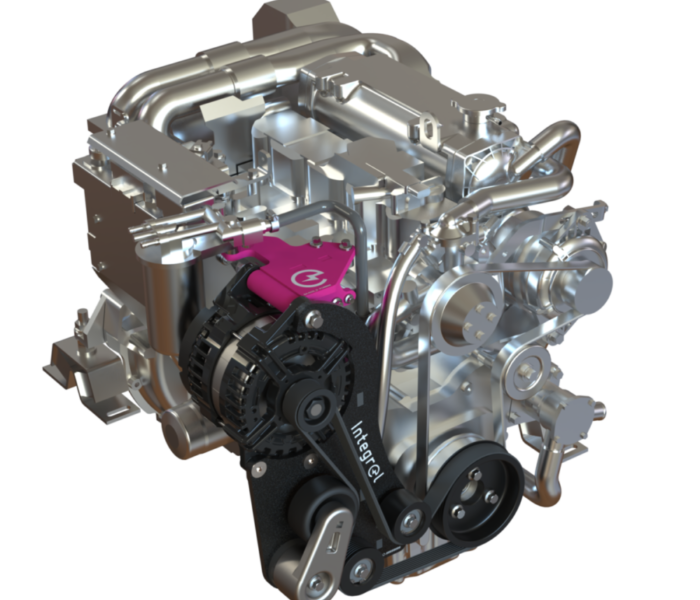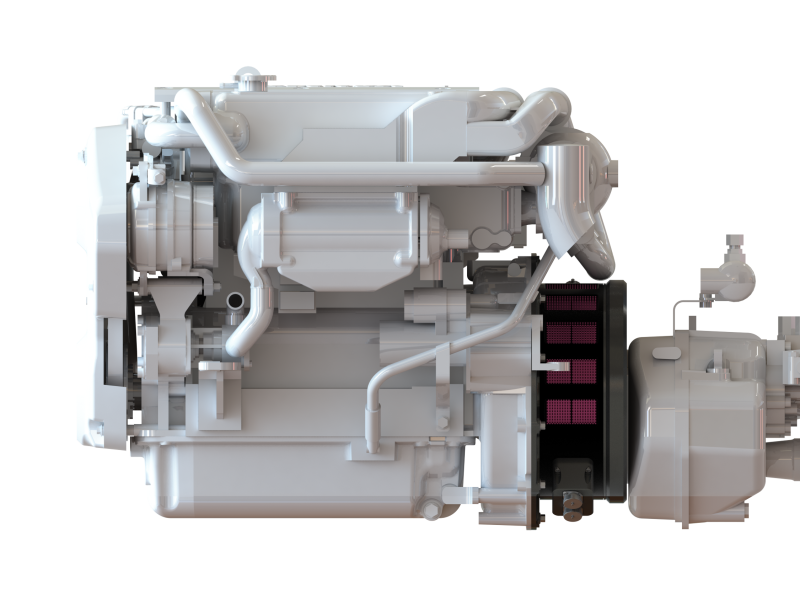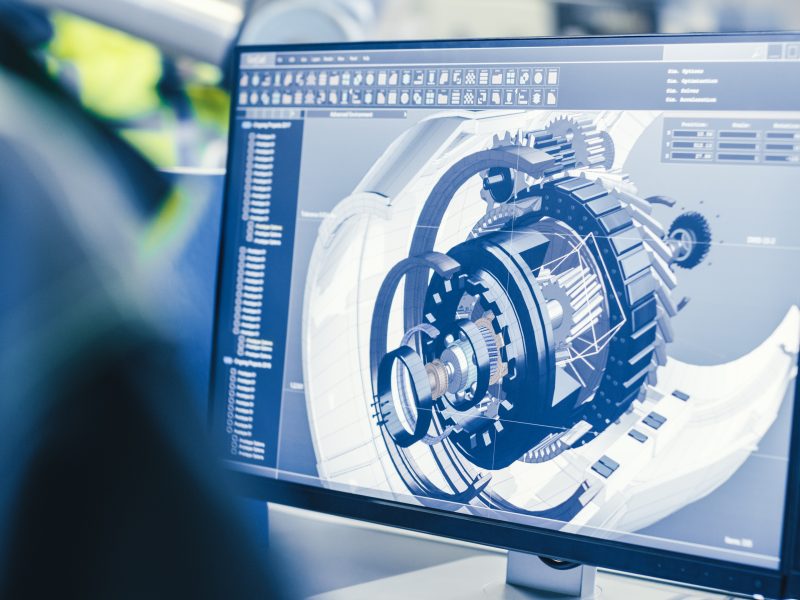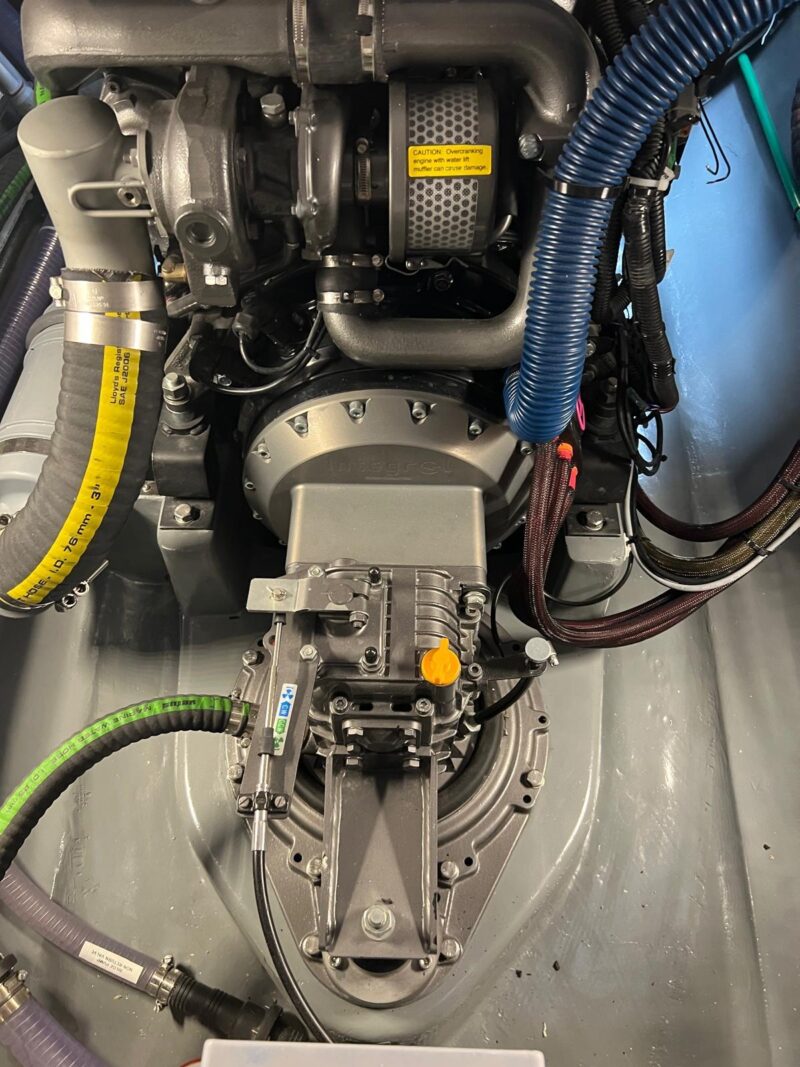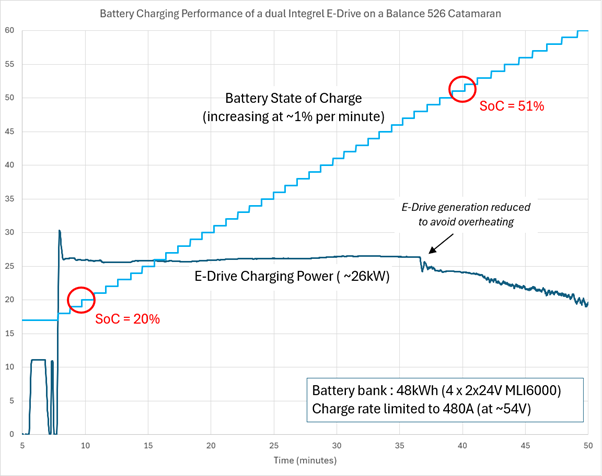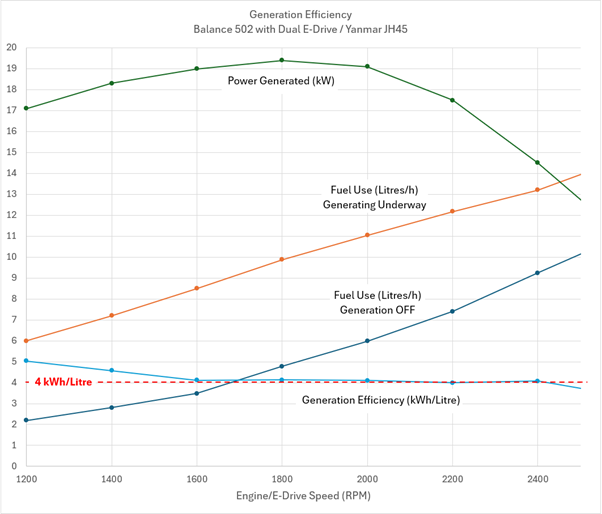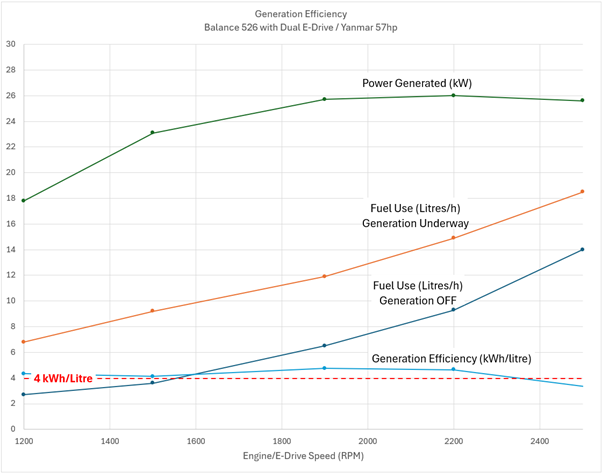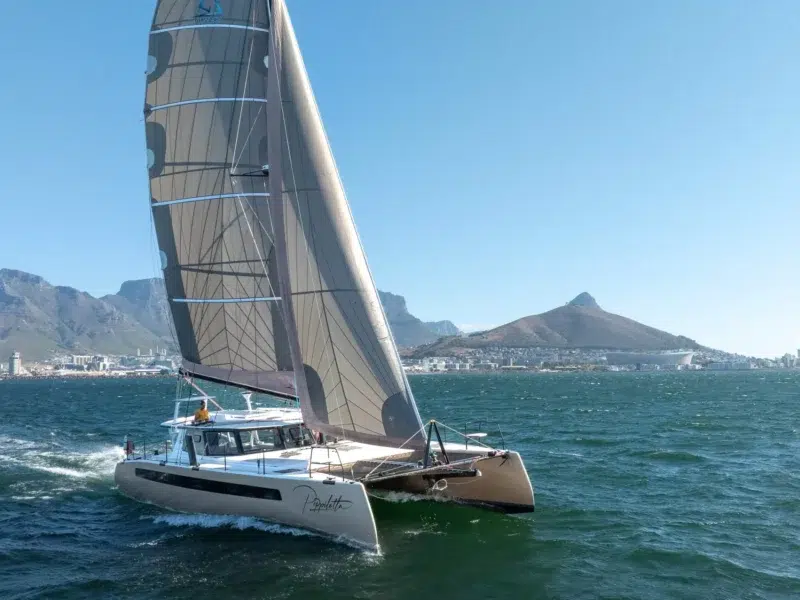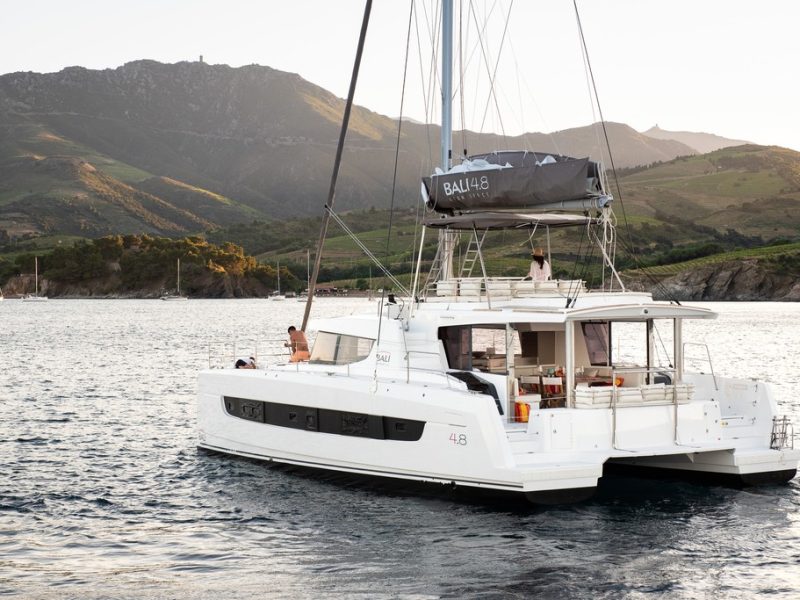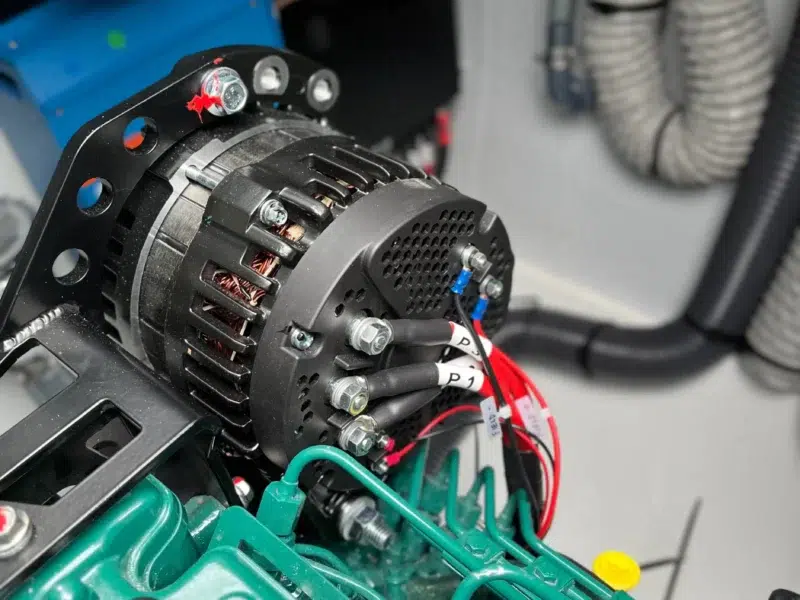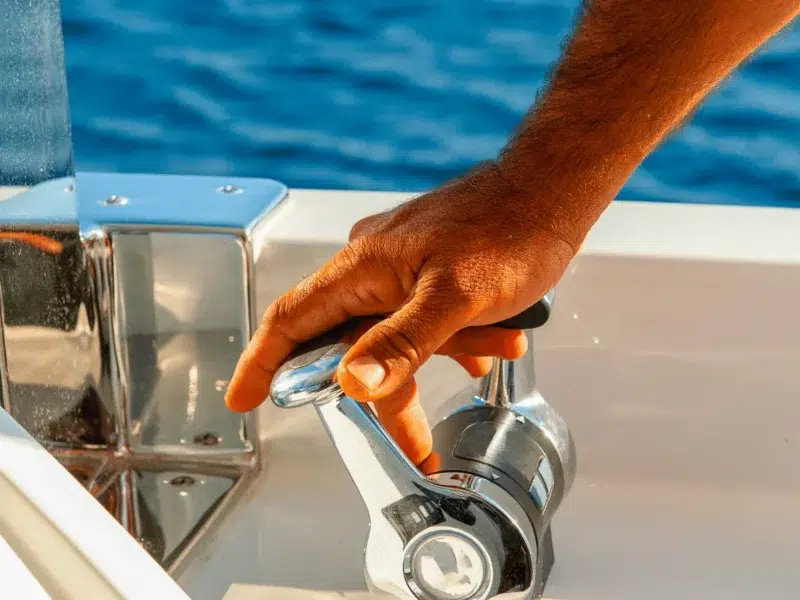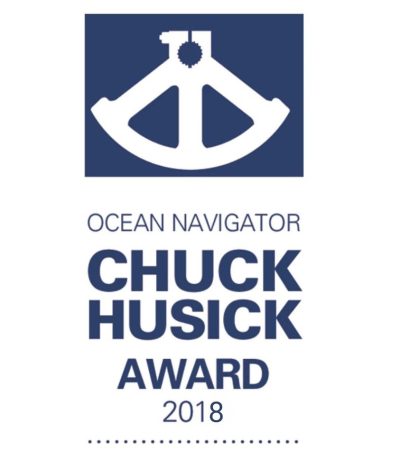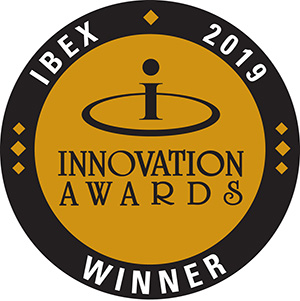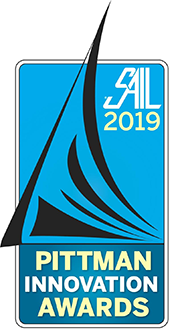E-Drive Delivers: Real Data, Real Results, Real Performance
After years of development, modelling, and testing, the first Integrel E-Drive systems are now out on the water onboard boats — and the data and performance are both impressive and encouraging. Early sea trials have confirmed that E-Drive not only meets our performance targets but surpasses them, offering clear advantages in power generation, drive and range, as well as cost savings for boat owners. So far, we’ve completed sea trials with Balance Catamaran models 482 and 502 using Yanmar JH 45 engines, and a Balance 526 using Yanmar JH 57 engines.
This first article in our new E-Drive Performance Series focuses on power generation efficiency — how E-Drive transforms onboard energy. In the next blogs, we’ll also explore electric drive efficiency and range, and take a closer look at hybrid driving, where one hull is powered by the engine and the other by E-Drive, demonstrating the full potential of intelligent, integrated hybrid propulsion.
E-Drive: Onboard Power Generation
Following the success of Integrel E-Power, which proved it’s possible to generate more onboard power with less fuel and lower emissions by replacing traditional generators with a smarter, more efficient system, Integrel E-Drive represents the next evolution in hybrid marine technology. By integrating electric propulsion and energy generation into one intelligent system, E-Drive delivers true hybrid capability, transforming how energy is produced, stored, and used on board.
Here’s how …
The following plot shows E-Drive generation data taken during a sea trial on a Balance 526 fitted with a 48 kWh battery bank. A dual E-Drive system can output a total of 30 kW; however, to maximise battery life, battery bank charging current is limited to 480 A (equating to about 26kW power with a battery voltage of 54V).
When generating power around 26kW, E-Drive charges the 48kWh battery bank at a rate of about 1% per minute. Yes, that’s right, the 48kWh battery bank can be charged from 20% to 80% in around 1 hour!
Generation Efficiency
Our E-Power fuel savings blog noted the power generation inefficiency of generators. In that blog, the generator fuel usage comparison graph shows the fuel efficiency of 9-12 kW generators to be around = 2.7 kWh/litre (8 kWh / 3 litres). Confirming this data, the following table shows the typical fuel efficiency of larger generators to be in the range 1.5-3.3 kWh/L, with the expected generation efficiency for charging large battery banks around 2.7-2.9 kWh/litre (source: GeneratorSource.com).
| Generator Size (kW) | 25% Load | 50% Load | 75% Load | 100% Load | Efficiency Metric |
| 20 | 2.2 | 2.9 | 3.0 | 3.3 | kWh/Litre |
| 30 | 1.5 | 2.2 | 2.5 | 2.7 | kWh/Litre |
| 40 | 1.7 | 2.3 | 2.5 | 2.6 | kWh/Litre |
By comparison, the following plots show the E-Drive generation efficiency of a Balance 502 and Balance 526 while underway during early sea trials. From the plots, E-Drive generation efficiency on the Balance 502 is about 4.1 kWh/litre, and about 4.7 kWh/litre for the Balance 526 at typical cruising speeds.
Putting it all together, when generating power underway, E-Drive is:
- 46% more efficient than a generator on a Balance 482 and Balance 502: (4.1-2.8)/2.8
- 68% more efficient than a generator on a Balance 526: (4.7-2.8)/2.8
Another way to look at the efficiency of generating with E-Drive is to calculate fuel savings. The following table shows fuel used to generate enough energy to fully charge a 48 kWh battery bank; a generator efficiency of 2.8kWh/l is used for these calculations.
| Model | Generator Fuel Used* (Litres) |
E-Drive Fuel Used* (Litres) |
E-Drive Fuel Saving (Litres) |
E-Drive Fuel Saving (%) |
| Balance 482/502 | 17.1 | 11.7 | 5.4 | 32% |
| Balance 526 | 17.1 | 10.2 | 6.9 | 40% |
* Fuel used to generate 48 kWh of energy
To completely charge a 48kWh battery bank, E-Drive saves:
- 5.4 litres of diesel, using 32% less fuel than a generator (Balance 482/502)
- 6.9 litres of diesel, using 40% less fuel than a generator (Balance 526)
Real Cost Savings
The owner of a Balance 482 recently completed the 10,000 km (6000-mile) Atlantic crossing from Cape Town to Grenada with E-Drive onboard. Upon arriving in Port Louis in Grenada, the owner asked Integrel if it would be cheaper to generate power using E-Drive or hook up to marina shore power.
With an energy cost of US$0.77 per kWh at the Port Louis Marina, and an installed battery bank of 36kWh on the Balance 482, here’s how the numbers stack up…
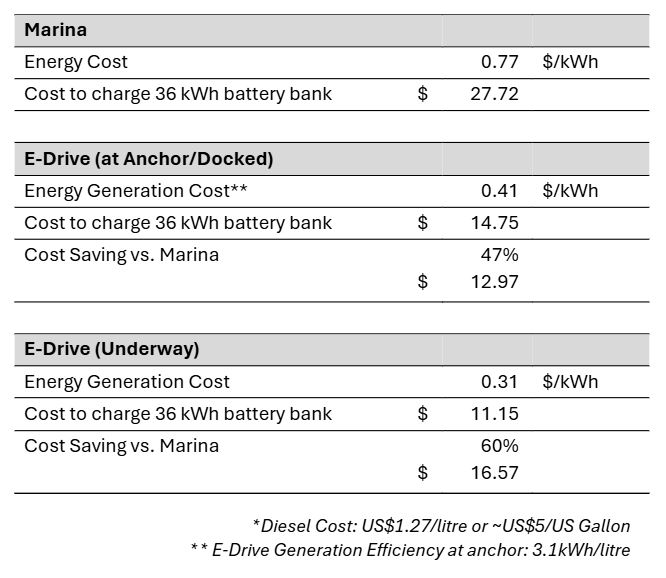
Analysing the data:
- It’s 47% cheaper to recharge the onboard batteries when at anchor or in the marina compared to paying marina shore power rates.
- Even better, when the owner is out on the boat enjoying time on the water and adventures afloat, it’s a huge 60% cheaper to generate power with E-Drive compared to using shore power at the marina.
- In conclusion, it’s much cheaper to use E-Drive to generate power than to buy it at the marina (note: these figures will vary slightly depending on individual marina energy costs).
After learning of these results, the owner’s final comment was:
“The lesson learned is to roll into the dock with full charge!”
With each additional test, the data reinforces what E-Drive was designed to achieve: making energy generation smarter, cleaner, more efficient, and more cost-effective, all while simplifying the onboard experience.
Wrapping Up
Summarising the information presented above, we can make the following observations:
Compared to a typical generator, Integrel E-Drive:
- Saves up to 40% of fuel used to generate energy onboard
- Is up to 68% more fuel efficient when generating energy
Compared to buying energy from a marina, Integrel E-Drive:
- Is up to 60% cheaper when used to generate energy onboard (depending on marina energy prices)
- Integrel E-Drive completely removes the need for – and associated costs of – a standalone diesel generator
The New Standard in Marine Energy Generation
These early trials and results prove what the Integrel team have always believed: that E-Drive isn’t just an alternative to conventional generation – it’s a leap forward in efficiency, performance, and integration. Real data from real boats is showing a measurable difference on every passage.
Next in our E-Drive Performance Series, we’ll dive into electric drive efficiency and range — exploring how E-Drive performs under propulsion, what kind of range you can expect under electric power, and how E-Drive seamlessly complements the onboard engine(s).
The numbers are as exciting as the experience — and we can’t wait to share them.
Ready to choose Integrel?
Get in touch today and our friendly, experienced team can help you start living a more luxury and environmentally friendly life out on the water…

